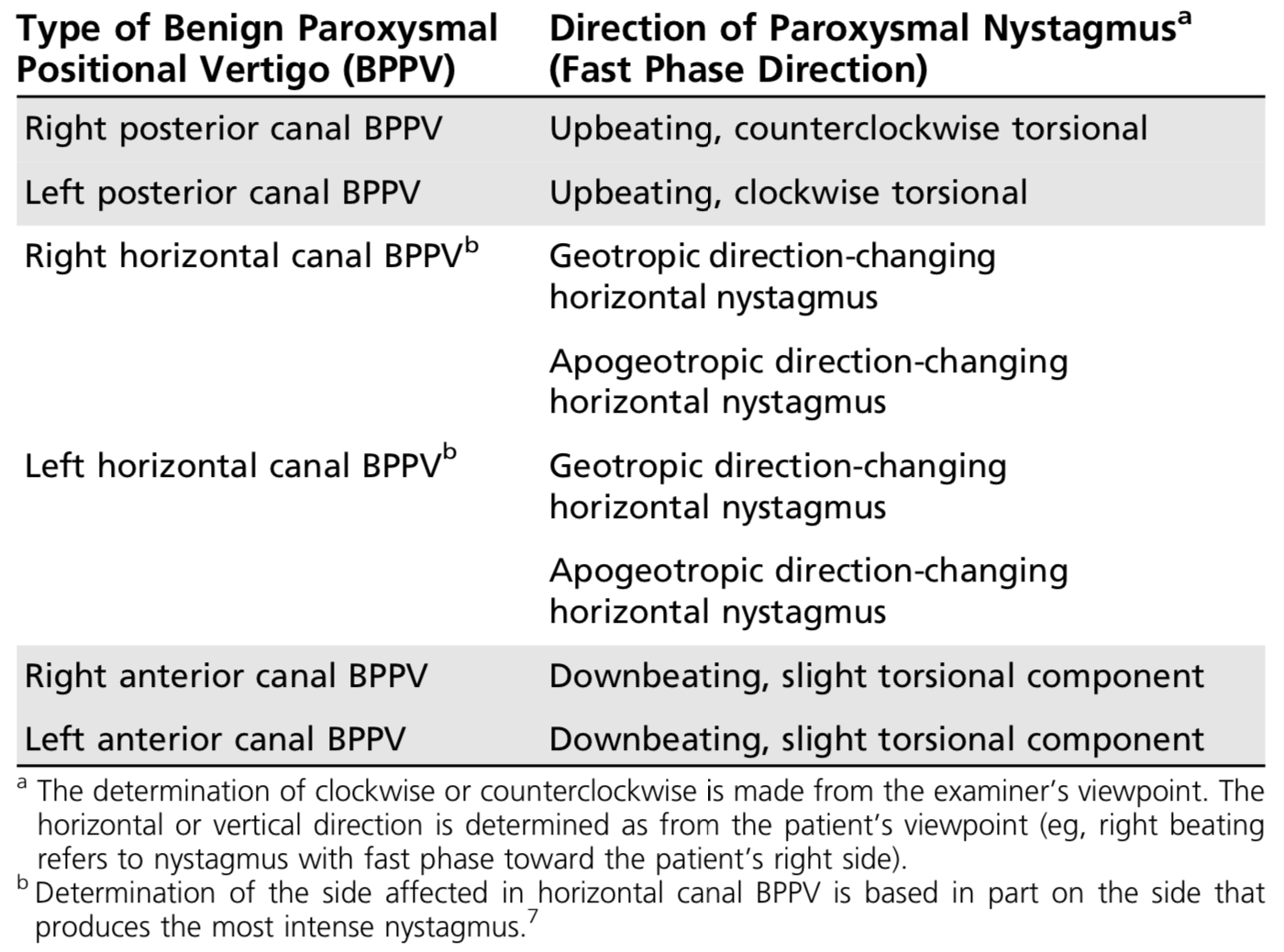DIZZINESS-BPPV
SUMMARY
1. Benign positional vertigo (BPPV) describes recurrent, brief episodes of vertigo (10-30 sec) evoked by certain tilting positions of the head, rolling over while supine, or straightening up after bending over.
2. Most common cause of recurrent vertigo, incidence increases with age.
3. It is thought to be due to loose otoconia in the semicircular canal.
4. 85% are related to the posterior semicircular canal, 15% to horizontal, < 1% to anterior semicircular canals.
5. Performing the Dix-Hallpike maneuver to the side affected by posterior canal BPPV results in a burst of torsional and upbeat nystagmus that ensues after a short latency (2-15 sec).
6. Resolves spontaneously over a couple of weeks or can be treated successfully with Epley and Semont manoeuvres that move the otoconia to a position of the inner ear that is less likely to induce vertigo.

Reference(s)
Fife, T., Dizziness in the Outpatient Care Setting, Continuum (Minneap Minn) 2017;23(2):359–395.
Wilkinson, I., Furmedge, D. and Sinharay, R. (2017). Oxford handbook of clinical medicine. Oxford: Oxford University Press. Get it on Amazon.
Feather, A., Randall, D. and Waterhouse, M. (2020). Kumar And Clark’s Clinical Medicine. 10th ed. S.L.: Elsevier Health Sciences. Get it on Amazon.
Hannaman, R. A., Bullock, L., Hatchell, C. A., & Yoffe, M. (2016). Internal medicine review core curriculum, 2017-2018. CO Springs, CO: MedStudy.
Therapeutic Guidelines. Melbourne: Therapeutic Guidelines Limited. https://www.tg.org.au [Accessed 2021].